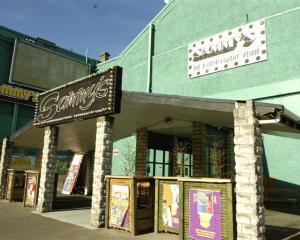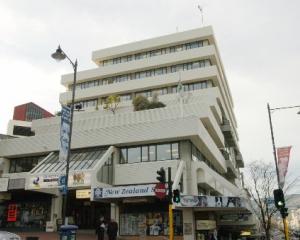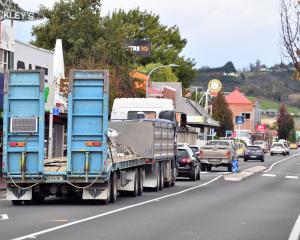Long-term planning, by its very nature, involves the use of the present to predict the future and therefore carries a high risk of inherent failure.
When the Dunedin City Council - or any other local body - talks of 50-year plans, it is entering the realm of unpredictability.
Global change is occurring at such a rapid pace today that decisions involving commitments beyond even 10 years ahead are fraught with potential pitfalls.
The council's transportation strategy supposedly sets out the direction for the next 20 years for solving or alleviating the many problems arising from increased private vehicle use.
Just three years ago, the council made public its proposed 10-year parking strategy (to an almost universally negative reaction), a serious effort to try to wean motorists from the present level of use of their motor vehicles in Dunedin's central business district.
There was some limited response to public complaints, and modifications were made, albeit slight. Yet today, the parking strategy seems to be working well, there is less congestion, and perhaps most significantly, the reorganisation of public transport timetables and routes has had a beneficial impact.
But will the parking strategy still make sense in 2020? Reports this week of an unprecedented surge in the use of public transport in greater Auckland should be encouraging councils to think much more imaginatively about future transport trends and needs.
If the Auckland example is confirmed over time, then it may be reasonably assumed that the cost of fuel is part of the reason for the change in behaviour, along with the difficulty and cost of central city parking, as is - perhaps most importantly - the much better provision of public transport services.
A similar pattern may be emerging in Wellington, where rail commuter traffic has increased markedly, but is also associated with prohibitive parking charges and availability. In short, some councils are forcing changes in motorist behaviour, with beneficial results.
This is consistent with the national transportation strategy, which requires that a commitment is made for transport decisions to reflect the wider government moves towards sustainability, and focus on long-term needs.
The days of providing ample parking to encourage activity in Dunedin's central business district - a strategy of the not-too-distant past - has now been replaced by a strategy to repel the invasion of the motor vehicles on grounds of the negative effects of congestion, air pollution, noise, and contributions towards health problems.
Of course, any transport management strategy which does not take fully into account the many variables faced by individual motorists will meet a great deal of resistance: the final version must be broadly acceptable to the city of Dunedin's road users.
Thus, the most recent pronouncements and scheme from the council, involving some key roads between the CBD and the harbour, require the closest scrutiny if the city is not to embark on a most costly mistake.
It was not difficult to predict, as we did in 2008, that higher fuel costs would force people to use public transport, thereby making the council's plan to charge premium rates for parking in the CBD ultimately redundant.
No-one today is seriously suggesting fuel prices will come down. It might therefore be arguable that elaborate and expensive adjustments and improvements to some of our major roads are similarly not justified, since the cost of private transport in 20 or even 50 years is surely beyond even a traffic planner's imagination.
In Dunedin, the particular requirements of the university, hospital and other major employers in the CBD also require particular solutions, as does the very significant problem of providing adequate road transport to Port Chalmers through the city. Public opinion will be vital to achieve an acceptable result.
Future growth in heavy transport to the port, for example, may well be acceptable (and less rate-payer expensive) were it to be restricted to rail; on the other hand, can the port road be made wider and safer for all users at an acceptable cost?
Similarly, the advantages and disadvantages of restoring two-way traffic on parts of the arterial routes need careful consideration.
It may well be that the council's case, when it is finally made, will be convincing. At the very least it must offer the public a range of measured choices.












